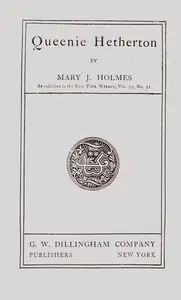"Hetty's Strange History" by Helen Hunt Jackson is a story from the late 1800s about Hetty Gunn, a kind and reliable woman who becomes the owner of her family's successful farm after her parents pass away. The story shows how important her family's history is to her and how much she cares about the people in her town. We meet Hetty as she deals with the recent death of her father and the pressure of what her family expects from her. As she gets used to being alone, the story looks at her memories, her grandfather's impact on her life, and how she gets along with everyone around her. Hetty is portrayed as clever, friendly, and hardworking, which makes her a well-liked person in her community. The beginning of the book hints at the themes of love, responsibility, and what society expects, which makes us wonder about Hetty's future and the problems she will face as she discovers who she really is.

Hetty's Strange History
By Helen Hunt Jackson
After losing her parents, a woman inherits the family farm and must navigate love, duty, and society's expectations as she sets out to discover her true self amongst the echoes of her family's history.
Summary
About the AuthorHelen Hunt Jackson was an American poet and writer who became an activist on behalf of improved treatment of Native Americans by the United States government. She described the adverse effects of government actions in her history A Century of Dishonor (1881). Her popular novel Ramona (1884) dramatized the federal government's mistreatment of Native Americans in Southern California after the Mexican–American War and attracted considerable attention to her cause. Commercially successful, it was estimated to have been reprinted 300 times, with readers liking its romantic and picturesque qualities more than its political content. The novel was so popular that it attracted many tourists to Southern California who wanted to see places from the book.
Helen Hunt Jackson was an American poet and writer who became an activist on behalf of improved treatment of Native Americans by the United States government. She described the adverse effects of government actions in her history A Century of Dishonor (1881). Her popular novel Ramona (1884) dramatized the federal government's mistreatment of Native Americans in Southern California after the Mexican–American War and attracted considerable attention to her cause. Commercially successful, it was estimated to have been reprinted 300 times, with readers liking its romantic and picturesque qualities more than its political content. The novel was so popular that it attracted many tourists to Southern California who wanted to see places from the book.











